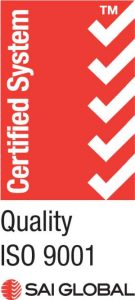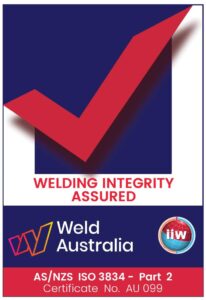Choosing the best welding method for your business could be challenging and complicated due to the wide range of options available. However, choosing the right method for the task at hand might mean the difference between success and failure in any production setting.
Welding is similar in that there is a wide range of options for pairing different techniques and materials. As a result, several hours can be saved in manufacturing, repairs, cleaning or polishing, or failed welds if the right welding procedure is used.
Whether welding is done regularly or seldom, the goal is always the same: to make a good weld as quickly as possible. Making a type of weld that goes through without leaving holes, pockets, or gaps is the gold welding standard. Possessing a high-quality surface quality is also important.
This article will examine four popular types of welding. Then, to help you decide which welding method is ideal for your project, we'll quickly go over some of the performance features each bring to the table.
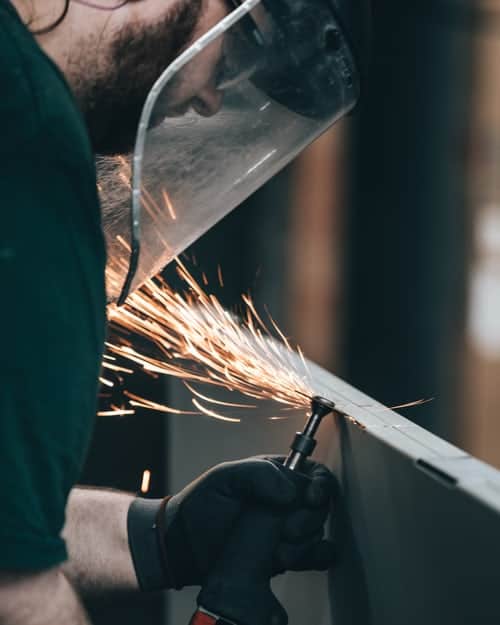
Unfortunately, no one standard welding method can be used in every situation. This is why it's important to consider the benefits and drawbacks of various welding techniques.
Metal inert gas arc welding, flux-cored welders, shielded metal arc welding and tungsten-gas arc welding are the most widely utilised welding methods for manufacturing metals. The following criteria should be used to determine which welding technique is best suited to the task at hand:
- The nature of the welding material,
- A measure of the thickness of a substance,
- Where to weld, how much power is available, what kind of power is needed, and how long it will take.
Welding with a Gas Metal Arc Filler wire made from the same substance as the base metal being welded is fed through a torch unit while a gas shields the torch. Electricity from a regular outlet is transferred to Wire for welding. As the two surfaces come into contact, an arc is formed, and the welding is done.
Wire fed from the device acts as a continuous consumable electrode with little downtime due to its uninterrupted flow.
A MIG welder has many advantages over other welding methods and is the preferred choice for common joining tasks. Some benefits of MIG welding include the following:
- It's the simplest form of welding to master. A novice MIG operator with training and experience can accomplish a beautiful weld.
- Fixes thin or thick plates.
- Used for welding common metals like stainless steel, aluminium and carbon steel.
- Overhead welding is possible and even encouraged.
- As gas acts as a shield, removing flux is unnecessary.
- Repairs or buildings can be completed in a fraction of the time thanks to the high welding rates possible.
For MIG welding, it's best to use a power source to deliver direct current in the opposite direction of the polarity. In most cases, welders employ a current with a straight polarity, meaning the electricity flows first, putting the torch to use in the workplace. In welding with reverse polarity, the current flows in the other direction, from the object to the welding flame. Several different types of currents can be used for MIG welding, but the DCRP current provides the best arc transference and the smoothest weld surface.
Since the shielding gas might be blown caused by the welding area by air or draughts, extra care must be taken while using a MIG welder outside or in draughty places. Moreover, more complex and initially more expensive equipment is needed for MIG welding. Among the tools and materials you'll need for MIG welding are the following:
- Electrical power source, electrode wire feeder, welding wires, gas cylinder, hoses, metal inert gas gun, and regulators.
MIG welding and flux-cored welding can be done using the same constant voltage apparatus. The electrode wire makes all the difference. Flux-cored welding use self-shielded Wire with flux within instead of running a solid wire paired with shielding gas.
Wires with a core are preferable to solid wires for the MIG procedure when working with thicker material. In addition, flux-cored welding has the benefits of:
- Better suited to outdoor work due to less vulnerability to draughts.
- When applied to rusty or unclean materials, the results are comparable to stick welding.
- There are fewer interruptions in the Wire's flow because of the continuous feed.
- Welding big portions requires a deep penetration welder.
- Advantageous for rough hard facing due to Deposition of more metals.
- It may reduce bulk by eliminating the necessity for a shielding gas bottle.
Welders have trouble with pores. Flux-cored welding using shielding gas is prone to this problem when working in draughty regions. Luckily, this obstacle is solvable with self-shielded, flux-cored Wire. It works as well as a stick welder work in windy situations, so the weld holds up better.
Friction-cored wires can make a better weld because the filler material can be designed to fit the base metal. Because of this, flux-cored welding may also be less affected by rust and scales just on the welded part.
Whether MIG or flux-cored, a wires welder can do just about whatever a stick welder can, usually better. Stick welding rods cost several hundred dollars, but Wire and gas for a wire welder cost far less. So, in addition to welding aluminium or sheet metals, a wire welder's versatility can help it pay for itself in no time.
Welding using Gaseous Tungsten. The welding region is kept clean and free of contaminants thanks to the shielding gas and permanent tungsten electrode used in this method. TIG welding can be performed in any orientation, even upside down or while flying. Thin materials can be fused thanks to the focused heat and arc control offered by this welding method. TIG welding has these benefits:
- Welding on sheet metals may be done precisely, reducing the total distortion.
- Delivers x-ray quality work when necessary, along with beautiful weld beads.
- The welder can regulate the heat applied during welding by adjusting the amperage with their foot or hand.
- Mould and die work that requires a good hard face can be completed.
- Argon is used for welding various metals, including steel and aluminium.
- Cleaning up splatter or flux is not required.
With aluminium, TIG power supplies employ alternating current, while steel, stainless steel, and other metals require direct current with straight polarity. Air con selectable electric drivetrains are offered in addition to suit a wide range of workpiece materials.
TIG welding is sluggish compared to cord MIG and flux-cored, but it produces high-quality welds. Yet it also has a higher skill bar for its operators to clear.
A TIG weld leaves no visible spatter or flux, making it a great choice for situations where cleanliness and polish are priorities. TIG welding calls for the following tools and supplies:
- What you need is a power source, some welding cables, as well as a TIG torch.
- Non-consumable tungsten electrodes, a water supply with the water supply and drain hoses, and an immobile cylinder containing a gas supply, along with hoses and regulators.
Quality welds can be made with TIG welding. One of the most common methods for fine and aesthetic work, welding is a versatile technique that can be applied to a wide range of materials. Stick welding skills are an additional consideration, as TIG equipment can perform both processes. Though more expensive than dedicated MIG or stick welders, a TIG/stick machine offers the operator greater versatility.
Top Metal fabrication company Melbourne
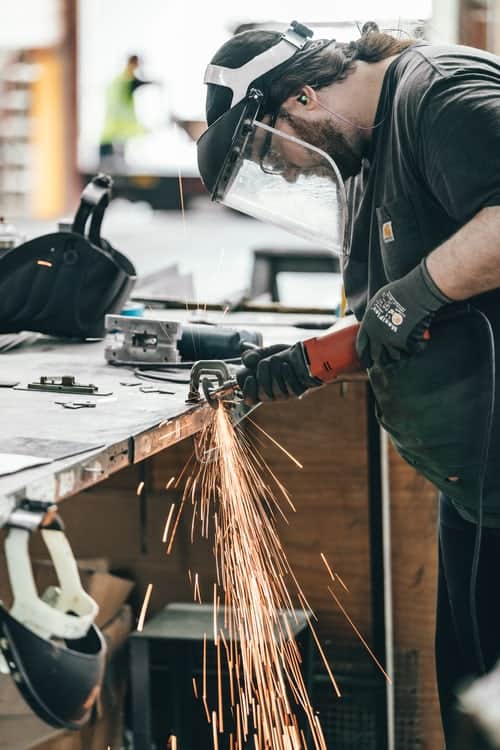
Method of Welding Using a Shielded Metal Arc, Flux-coated electrodes are made of steel, stainless, iron, and other alloys. The electrodes used in welding are chosen to be compatible with the base material.
Except for the source of power, electrode holder, and work clamps, no other tools are needed. Stick welding has these benefits:
- Accessible from any angle and even in tight spaces. On the other hand, it's not ideal for welding in the sky.
- Welds are unaffected by wind so you can use them outside.
- Stick welding is suitable for most materials.
- The cheapest option to launch your venture.
- TIG welding is a more forgiving welding technique than MIG rusty or unclean metal. But, before welding, it is always best to remove any paint, rust, or other debris by scraping or grinding it away.
Stick welding has some restrictions, including:
- It may be challenging or impossible to weld thin materials
- It's hardly adequate for welding aluminium. Stick welding aluminium demands expert operator competence.
- The weld has to have the slag removed from it.
- The stick is a more time-consuming method than MIG.
If you're using a stick welder, you should invest in an AC/DC power supply for welding. In contrast to AC welding, DC wiring with reverse polarity offers several benefits. Some of the benefits include a shorter curve, stronger welds on fairly thin materials, less splatter, fewer arc failures and stickiness, more time welding, so outline, and far less spent a lot of time powering up the torch.
Duty Cycle: What's the Deal? It is possible to categorise welding power sources according to their "size" by measuring the maximum amperage they can produce during a specified "duty cycle." This means that a welder can be used for ten minutes per cycle but only at full capacity for eight minutes.
Smith's AC/DC devices can deliver 200 A of current-controlled alternating current at the 40-percentage duty cycle. That's four minutes of steady weld current at 200 amps. But to avoid overheating, it must cool down for the remaining six minutes.
But the relationship between the duty cycle and current flows in the opposite direction. The duty cycle improves when the amperage is decreased. When set to 130 amps, that same power source has a full-duty cycle, meaning it can weld nonstop. At 300 amps, the opposite extreme of the power spectrum, the duty cycle is around 20%. That's only two out of ten minutes of welding time.
When comparing metals of varying thicknesses, it is clear that thinner metals need lesser current due to the lower switching frequency. For example, MIG welding 18 gauge steel requires about 70 amps for a single blast. Only one riveting of half-inch steel requires around 180 amps of power.
The secret is to get the phrase in one go. It is possible to weld particularly burdensome with less amperage by doing a succession of narrow passes. The downside is the added time for each additional pass. Furthermore, you risk exceeding the machine's duty cycle, which will cause you to wait for more than you would be welding.
Table of Contents
What Should the Ideal Welder Size Be?
For welding, there is no one-size-fits-all source of power. The spectrum of action for each device is substantial. Here's a quick rundown of what welding machine dimensions work best for certain tasks.
Many minor welding repairs on steel, stainless steel, and aluminium can be accomplished using a 130-amp MIG or TIG device set to a 20 to 30 per cent duty cycle.
For intensive maintenance or factory jobs, choose one MIG and TIG welding with at least 20–25 amps and a pulse duration of steel of 35 per cent or more. It's important to remember that you'll need adequate current to tackle the root pass successfully. Replacing a defective root pass with a good one is not possible.
Choosing the best welding source of electricity can be a straightforward and profitable option if you consider the different elements of your application and examine the benefits each welding technique offers.
For a do-it-yourselfer or someone just starting in the welding industry, the huge variety of tools and supplies out there can be a source of endless fascination. From metal inert gas welders and inert tungsten gas and stick welders to oxyacetylene welders, there is a plethora of welding equipment from which to choose. In addition to the more commonplace TIG and MIG welding machines, several other high-end machines are comparably more expensive; these high-end welding machines are typically driven by fuel-fed engines so that they can be operated off the electric grid with the same ease.
Check out North 110PWE Fibre-Metal Pipeliner Superglas Welding Helmet Review.
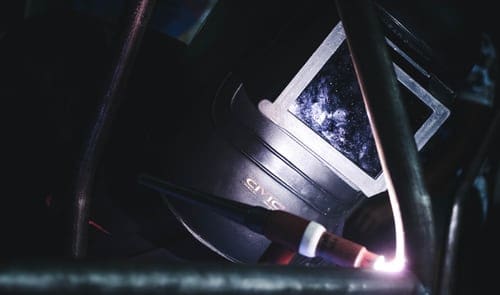
What Should You Consider When Setting a Budget?
You could have a ballpark figure for your spending plan already.
Determine your welding needs and preferences before purchasing a welder. Though it's easy to get bogged down in the details of a project, it's important to keep the big picture in mind as you work. For example, is there any chance you'll need more juice shortly?
Different jobs call for different amounts of amperage and power and different levels of duty cycle. Therefore it's important to think about all of these factors.
The price of a welder doesn't stop at the purchase price; you'll also need to buy a variety of consumables and other equipment to make it useful. Welding equipment, gas, and supplies are all part of this.
To improve your chances of finding work as a welder, it is important to familiarise yourself with the various welding tools available. In addition, employers are more likely to promote you to a supervisory or helping role on a project if you can confidently state why one particular kind of welding equipment is preferable to another.
Determine the type of metal that is used.
Welding is often done on carbon steel exclusively. However, unlike other metals, carbon steel can withstand the high temperatures that a beginner welder may inadvertently apply to the material. Hence, it can be used with most modern welding equipment. In addition, because of its corrosion resistance, stainless steel is an excellent material for preserving food and drink.
Normal TIG and MIG welding equipment can be used, and it doesn't need as much amperage as carbon steel. Aluminum, with its high heat-conducting capability, necessitates a nearly constant heat source to prevent the molten weld from drying out. Unfortunately, the excessive heat input usually causes the workpiece to distort.
Hence, welding aluminium properly calls for more sophisticated equipment, such as a MIG machine with pulse welding capabilities. On the other hand, an elevated TIG welding machine would be preferable for welding aluminium. So, you should evaluate the metals you will be welding together before making your final machine choice.
Choose a good place to do the welding.
The location where the welding will be done is also an important consideration. When working inside, you can use parts. The first part AC machine is connected to a 220-240-volt AC source. The standard voltage for electrical systems in commercial and residential buildings is 115 volts. The vast majority of basic welding devices use this voltage. The gadget was convertible between single-phase and three-phase operation.
See the technical specifications for further information.
Reading the specifications sheet of welding equipment will help you learn the key features that set apart the best from the rest. To get an idea of how much welding a machine can do in ten minutes, for instance, you can consult the specifications page. The term "duty cycle" refers to the average number of weldable minutes in ten minutes. Failure to adhere to the duty cycle may result in overheating and eventual failure of the machine's internal circuitry.
Identify if there is a need for compressed gas.
To perform various types of welding, various compressed gases are required. Compressed gases such as oxygen, argon, and carbon dioxide are frequently employed in welding.
What Are the Most Common Mistakes People Make When Buying a Welding Machine?
Investing in machinery for your business is a major deal that might make or break your organisation. The same holds when picking out a welding machine. There are many guides and tutorials to assist you in selecting welding equipment and coach you through the procedure, but this article will focus on the mistakes you should make every effort to avoid and why.
You’re not sure what welding machine you want.
The MIG Welder, the TIG Welder, and the Stick Welder are just a few of the possibilities accessible to you when you set out to purchase welding equipment, so you should carefully consider which would serve your business the best. You should familiarise yourself with the many machines available and determine which one is most appropriate for your needs to prevent making an expensive mistake. Finally, you should check the references!
You forgot to look at the extra expenses
Never discount the possibility of unforeseen costs while shopping for a welding machine. In the case of TIG welders, for instance, you'll need to invest in a variety of auxiliary equipment, such as a power source, welding cables, a TIG torch, etc. Those trying to stick to a tight financial budget should probably go elsewhere. Looking into the MIG welder or the stick welder could be a good option if you're on a tighter budget. However, if you're planning on buying a more expensive welding machine, you shouldn't forget about the costly accessories you'll need to go along with it.
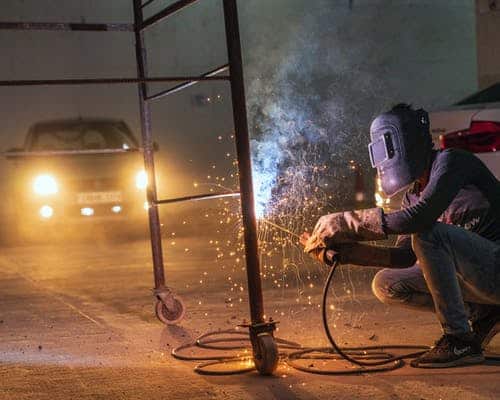
You seem to care only about profits.
Everyone is looking to cut costs everywhere they can, but purchasing a cheap welder is not the place to start. Buying a less expensive welding machine could hurt your company long-term. To put it another way, if you buy a cheap welder, you run the chance of it breaking or not having enough power to do a project that requires welding. Spending more money will ensure you have the power and quality you need. That may save you cash in the long run, though, if you don't have to spend money on maintenance or a replacement machine. Unfortunately, there is no free lunch when it comes to welding equipment.
You wish to purchase a pre-owned machine.
While this is another inexpensive choice, it ultimately falls short of expectations. Choosing the appropriate machine the first time can save a lot of hassle, but it may be smart to test the waters with a used model, especially when making a long-term commitment. There's always the chance that a secondhand welding machine will break down in the middle of a major project or that it won't have enough muscle to join together two pieces of metal. In conclusion, getting by with a used welding machine may be doable in the short term, but it's not sustainable.
You are hesitant to ask for assistance because of your fear.
Even if this isn't your first time shopping for a welding machine, it's important to feel comfortable asking for guidance. Professional guidance should be sought when deciding which sort of welding machine is suitable for a given welding project or business, as each has its own unique set of requirements and requirements. Don't be afraid to seek advice to make the best choice possible.
Conclusion
With so many choices, it can be difficult to determine which welding technique is ideal for your company. For metal fabrication, the most common welding techniques are metal inert gas arc welding, flux-cored welders, shielded metal arc welding, and tungsten-gas arc welding. The type of welding material, the desired thickness, the desired weld location, the available power source, the type of power required, and the anticipated welding time are all factors to consider when deciding on the most appropriate welding technique. The advantages of MIG welding make it the go-to technique for most welding jobs. Whether you need to repair a thin or thick plate, MIG welding is the quickest and easiest method.
It is recommended to employ a power supply that provides direct current with the polarity reversed. Instead of running a solid wire with shielding gas, flux-cored welding uses a wire that contains the shielding material, making it less susceptible to draughts and making it ideal for use in outdoor settings. It's helpful for rough hard facing because more metals can be deposited, and it could reduce size if a shielding gas bottle isn't needed. Self-shielded, flux-cored Wire is preferable to stick welding rods because it prevents the formation of pores, which is a common problem for welders in windy environments. Since the filler material in friction-cored wires can be tailored to the base metal, the resulting weld is stronger.
The welding area is protected from debris and other contaminants by the shielding gas and the permanent tungsten electrode used in gaseous tungsten welding. TIG welding can be done in any position, including upside down or while in the air, and it can produce x-ray quality results when required. Because it produces no visible spatter or flux, it is an excellent option whenever these qualities are highly valued. The process of welding can be used on a wide variety of substrates. A power source, welding cables, and a TIG torch are needed.
TIG welding is more forgiving than MIG welding on rusty or unclean metal, but it is more time-consuming and requires an experienced operator. Shorter curve, stronger welds on relatively thin materials, less splatter, fewer arc failures and stickiness, more time welding, so outline, and far less time spent powering up the torch are just some of the advantages offered by AC/DC power sources. In order to prevent overheating, Smith's AC/DC devices can only supply 200 A of current-controlled alternating current at a 40% duty cycle before they need to cool down for the remaining six minutes. The power source has a full-duty cycle at 130 amps, allowing for continuous welding. Thinner metals require less current because their switching frequency is lower than that of thicker metals.
Select a MIG and TIG welder with 20-25 amps and a steel pulse duration of 35% or more for intensive maintenance or factory jobs. Metal inert gas welders, inert tungsten gas and stick welders, and oxyacetylene welders are just a few of the many tools and supplies available to welders. Prior to making a welder investment, it's wise to assess your welding requirements and personal preferences. The type of metal to be welded and the available welding equipment should also be considered. The total cost of ownership of a welder includes not only the machine itself, but also the accessories and consumables necessary to use it effectively.
Purchasing new machinery can be a life-or-death decision for a company. To pick the right welding machine, you should consider the metals you'll be joining, where you'll be doing the welding, the machine's technical specifications, whether or not you'll need compressed gas, and the recommendations of others. Not researching the many options available and failing to account for additional costs are the two most common blunders made by would-be welders. The most critical information is that you should seek professional advice when deciding which type of welding machine is appropriate for your project or business, and that you should budget for the possibility of unexpected costs. In the long run, your business could suffer if you invest in a low-quality welder that breaks down or doesn't have enough power to complete the job.
The time and effort saved by making the right machine choice the first time around is substantial; however, before committing to a machine for an extended period of time, it may be prudent to try out a used model first. If you want to make the best decision, you should get some expert advice.
Content Summary
- Choosing the best welding method for your business could be challenging and complicated due to the wide range of options available.
- However, choosing the right method for the task at hand might mean the difference between success and failure in any production setting.
- Welding is similar in that there is a wide range of options for pairing different techniques and materials.
- This article will examine four popular types of welding.
- Then, to help you decide which welding method is ideal for your project, we'll quickly go over some of the performance features each bring to the table.
- Unfortunately, no one standard welding method can be used in every situation.
- This is why it's important to consider the benefits and drawbacks of various welding techniques.
- Metal inert gas arc welding, flux-cored welders, shielded metal arc welding and tungsten-gas arc welding are the most widely utilised welding methods for manufacturing metals.
- It's the simplest form of welding to master.
- Moreover, more complex and initially more expensive equipment is needed for MIG welding.
- Among the tools and materials you'll need for MIG welding are the following:Electrical power source, electrode wire feeder, welding wires, gas cylinder, hoses, metal inert gas gun, and regulators.
- MIG welding and flux-cored welding can be done using the same constant voltage apparatus.
- Luckily, this obstacle is solvable with self-shielded, flux-cored Wire.
- Whether MIG or flux-cored, a wires welder can do just about whatever a stick welder can, usually better.
- Stick welding rods cost several hundred dollars, but Wire and gas for a wire welder cost far less.
- So, in addition to welding aluminium or sheet metals, a wire welder's versatility can help it pay for itself in no time.
- What you need is a power source, some welding cables, as well as a TIG torch.
- Quality welds can be made with TIG welding.
- Except for the source of power, electrode holder, and work clamps, no other tools are needed.
- Stick welding is suitable for most materials.
- In contrast to AC welding, DC wiring with reverse polarity offers several benefits.
- Smith's AC/DC devices can deliver 200 A of current-controlled alternating current at the 40-percentage duty cycle.
- It is possible to weld particularly burdensome with less amperage by doing a succession of narrow passes.
- Many minor welding repairs on steel, stainless steel, and aluminium can be accomplished using a 130-amp MIG or TIG device set to a 20 to 30 per cent duty cycle.
- Determine your welding needs and preferences before purchasing a welder.
- Welding equipment, gas, and supplies are all part of this.
- To improve your chances of finding work as a welder, it is important to familiarise yourself with the various welding tools available.
- Determine the type of metal that is used.
- Choose a good place to do the welding.
- See the technical specifications for further information.
- The same holds when picking out a welding machine.
- You're not sure what welding machine you want.
- Never discount the possibility of unforeseen costs while shopping for a welding machine.
- However, if you're planning on buying a more expensive welding machine, you shouldn't forget about the costly accessories you'll need to go along with it.
- Buying a less expensive welding machine could hurt your company long-term.
- Spending more money will ensure you have the power and quality you need.
- You wish to purchase a pre-owned machine.
- In conclusion, getting by with a used welding machine may be doable in the short term, but it's not sustainable.
- You are hesitant to ask for assistance because of your fear.
- Even if this isn't your first time shopping for a welding machine, it's important to feel comfortable asking for guidance.
FAQs About Weldings
Never perform welding or cutting operations near combustible materials (gasoline cans, paints, paper, rags, etc.). flammable materials from the hot slag and sparks resulting from the welding and cutting operations. from harmful light rays, sparks, and hot molten metal during welding, cutting, and heating operations.
Welding aluminium is more difficult than welding steel, but you are much more likely to create quality welds if you learn the basics. MIG welding aluminium is easier than TIG welding aluminium, and it requires less costly equipment.
Aluminium alloys can be joined to steels relatively easily using techniques such as adhesive bonding, mechanical fasteners or brazing, but welding is preferred when superior structural integrity is required. However, welding of aluminium alloys to steel is difficult.
Magnesium is the most lightweight metal on earth and one of the most abundant elements found within our earth's crust. Its strength-to-weight ratio makes it very useful for aerospace and race cars!
While it's true that aluminium is softer and easier to cut, bend, and form, its chemical makeup and characteristics make it more difficult to weld, requiring advanced skills. Aluminium conducts about five times more heat than stainless steel and requires much higher heat inputs than steel during welding.
